- Home
- Clive Cussler
Blue Gold Page 5
Blue Gold Read online
Page 5
He shook his head sadly. “In Latin America, government tends to move slowly unless there is someone’s pocket to be filled. Worthwhile projects sink into the morass.”
“Sounds like home. Our bottomless swamp is named Washington, D.C.”
They were laughing at their shared joke when the housekeeper herded a native into the study. He was short and muscular, wore a loincloth, and had large copper loops in his ears. His jet-black hair was cut in bangs, and his eyebrows had been shaved off. He spoke in respectful tones to the doctor, but his excited speech and darting eyes made it clear something had set him off. He kept pointing toward the river. Dr. Ramirez grabbed a broad-brimmed Panama hat from a hook.
“There is apparently a dead man in a canoe,” he said. “My apologies, but as the only government representative of any kind within a hundred miles, I must investigate.”
“May we come?” Gamay said.
“Of course. I am hardly a Sherlock Holmes and would welcome other trained scientific eyes. You may find this of interest. This gentleman says the dead man is a ghost-spirit.” Noting the puzzled reaction of his guests, he said, “I’ll explain later.”
They hustled from the house and walked quickly past the huts to the edge of the river. The men of the village were gathered silently near the water. Children were trying to peek through their legs. The women stayed back. The gathering parted as Dr. Ramirez approached. Tied up to the dock was an ornately carved dugout canoe. The dugout was painted white except for the bow, which was blue, and a blue stripe that extended from the front to the back.
The body of a young Indian man lay on his back inside the canoe. Like the village Indians, he had black hair cut in bangs and he wore only a loincloth. The resemblance ended there. The village men tattooed their bodies or dabbed crimson paint on their high cheekbones to protect them from evil spirits who supposedly cannot see the color red. The dead man’s nose and chin were painted in a pale blue that extended down his arms. The rest of his body was a stark white. When Dr. Ramirez leaned into the canoe his shadow startled the green-bottle flies clustered on the dead man’s chest, and they buzzed off to reveal a gaping circular hole.
Paul sucked his breath in. “That looks like a gunshot wound.”
“I think you’re right,” Dr. Ramirez said, a serious look in his deep-set eyes. “It doesn’t resemble any spear or arrow wound I’ve ever seen.”
He turned to the villagers and after a few minutes of conversation translated for the Trouts.
“They say they were out fishing when the canoe came floating on the river. They recognized it from the color as a ghost-spirit boat and were afraid. It appeared to be empty so they came alongside. They saw the dead man in the canoe and thought they would simply let the boat go on its way. Then they thought better of it, because his spirit might come back to haunt them for not giving him a decent burial. So they brought him here and made him my problem.”
“Why would they be afraid of this . . . ghost-spirit?” Gamay asked.
The doctor tweaked the end of his bushy gray mustache. “The Chulo, which is the local name for the tribe this gentleman belongs to, are said to live beyond the Great Falls. The natives say they are ghosts who were born of the mists. People who have gone into their territory have never come out.” He gestured toward the canoe. “As you can see, this gentleman is flesh and blood like the rest of us.” He reached into the canoe and pulled out a bag made of flayed animal skin that was lying next to the corpse. The village natives backed away as if he were brandishing a sack full of black plague. He spoke in Spanish to one of the Indians, who became more animated the longer they talked.
Ramirez abruptly ended the conversation and turned to the Trouts. “They are afraid of him,” he said, and indeed, the village men were drifting back to their families. “If you would be so kind, we will haul the boat onto shore. I persuaded them to dig a hole, but not in their own cemetery. Over there, on the other side of the river, where nobody goes anyhow. The shaman has assured them that he can place enough totems on the grave to keep the dead man from wandering.” He smiled. “Having the body so near will give the shaman more power. When something goes wrong with his spells he can always say the dead man’s spirit has returned. We will send the boat off by itself down the river, and the spirit will be allowed to follow it.”
Paul eyed the canoe’s fine workmanship. “Seems a shame to waste such a beautiful example of boatbuilding. Anything to keep the peace.” He grabbed one end of the canoe. With the three people pulling and pushing, they soon had it up on the shore away from the river. Ramirez covered the body with a woven blanket from the canoe. Then he retrieved the sack, which was about the size of a golf bag and tied with thongs at the open end.
“Perhaps this will tell us more about our ghost,” he said, leading the way back to the house. They went into the study and placed the bag on a long library table. He untied the thongs, opened the bag gingerly, and peered inside. “We must be careful. Some of the tribes use poisoned arrows or blowgun darts.” He lifted the bottom of the sack, and several smaller bags slid out onto the desk. He opened one and extracted a shiny metal disk that he handed to Gamay. “I understand you studied archaeology before you became a biologist. Perhaps you know what this is.”
Gamay furrowed her brow as she examined the flat, round object. “A mirror? It appears that vanity is not confined to women.”
Paul took the mirror from her hand and turned it over to examine the markings on the back. A smile crossed his face. “I had one of these when I was a kid. It’s a signal mirror. Look, these are dots and dashes. This isn’t like any Morse code I know, but it’s not bad. See these little stick figures? A basic code. Guy running one way means come, facing the other direction is go, I’d guess. Here’s someone lying down.”
“Stay where you are,” Gamay ventured.
“My guess, too. These two fellows with spears might mean join me to fight. Little guy and the animal could stand for hunt.” He chuckled. “Almost as good as a cell phone.”
“Better,” Gamay said. “It doesn’t use batteries or cost you per minute.”
Paul asked Ramirez if he could open another bag, and the Spaniard gladly assented.
“Fishing kit,” Trout said. “Metal hooks, fiber line. Hey,” he said, examining a crude pair of metal pincers. “Bet this is a pair of pliers for pulling hooks out.”
“I’ve got you beat,” Gamay said, emptying another bag and pulling out a connected pair of small wooden circles with dark transparent surfaces filling their openings. She attached the apparatus to her ears with fiber hoops. “Sunglasses.”
Not to be outdone, Ramirez also had been poking through bags. He held a gourd about six inches long, unplugged the wooden top, and sniffed. “Medicine perhaps? It smells like alcohol.”
Hanging from the bottom was a miniature bowl and a wooden handle with a flat piece of stone and an irregular wheel on a rotating axis. Paul stared thoughtfully at the gourd, then took it from the other man. He filled the dish with the liquid, brought the wooden device near, and flicked the wheel. It scraped across the stone and emitted sparks. The liquid ignited with a poof.
“Voilà,” he said with obvious satisfaction. “The very first Bic cigarette lighter. Handy for starting a campfire, too.”
More interesting discoveries followed. One bag held herbs Ramirez identified as medicinal plants including some he had never seen. In another was a slim, flat piece of metal, pointed at both ends. When they placed it on a glass of water it swung around until one end pointed toward the magnetic north. They found a bamboo cylinder. When held to the eye the glass lenses embedded inside offered about an eight-power telescopic magnification. There was a knife that folded into a slim wooden case. Their last find was a short bow made from overlapping strips of metal like a car spring and curved to provide maximum pull for an arrow. The bowstring was of thin metal cable. It was hardly the primitive design one would expect to find in the rain forest. Ramirez ran his hand over the polished metal.<
br />
“Amazing,” he said. “I’ve never seen anything like this. The bows the villagers use are simple dowels pulled back and tied with a crude bowstring.”
“How did he learn how to make these things?” Paul said, scratching his head.
Gamay said, “It’s not just the objects themselves but the material they are made of. Where did it come from?”
They stood around the table in silence.
“There is a more important question,” Ramirez said somberly. “Who killed him?”
“Of course,” Gamay said. “We were so overwhelmed by his technical accomplishments that we forgot that these objects belong to a dead human being.”
“Do you have any idea who might have murdered him?” Paul asked.
A dark cloud descended on Ramirez’s brow. “Poachers. Wood cutters and burners. The latest are men who collect valuable plants for medicine. They would kill anyone who got in their way.”
“How could a lone Indian be a threat?” Gamay asked.
Ramirez shrugged.
Gamay said, “I think that in a murder investigation you are supposed to start with the corpse.”
“Where did you hear that?” Paul said.
“I may have read it in a detective novel.”
“Good advice. Let’s take another look.”
They walked back to the river and uncovered the body. Paul rolled it over onto its stomach. The smaller entry wound indicated that the man had been shot in the back. Trout gently removed a carved pendant from around his neck. It showed a winged woman holding her hands in front of her as if she were pouring from them. He passed it to Gamay, who said the figure reminded her of Egyptian engravings of the rebirth of Osiris.
Paul was taking a closer look at the reddish welts on the dead man’s shoulders. “Looks like he’s been whipped.” He rolled the body onto its back again. “Hey, check out this strange scar,” he said, indicating a pale thin line on the Indian’s lower abdomen. “If I didn’t know better, I’d say he had his appendix out.”
Two dugouts arrived from across the river. The shaman, whose head was adorned with a brilliant crown of feathers, announced that the grave was ready. Trout covered the dead body with the blanket, and, with Gamay at the tiller, they used the inflatable to tow the blue-and-white canoe to the other side. Trout and Ramirez carried the body a few hundred yards into the forest and buried it in the shallow hole. The shaman surrounded the grave with what looked like various dried chicken parts and solemnly warned the assemblage that the spot would be forever taboo. Then they towed the empty canoe to midstream, where the current would catch it, and set the dugout adrift.
“How far will it go?” Paul asked as they watched the blue-and-white craft wheel slowly on its final journey.
“There are rapids not far from here. If it isn’t broken up on the rocks or caught in the weeds, it could continue on to the sea.”
“Ave atque vale,” Trout said, quoting the old Roman salute to the dead. “Hail and farewell.”
They went back across the river. As Ramirez was climbing from the inflatable, he slipped on the wet bank.
“Are you all right?” Gamay said.
Ramirez grimaced with pain. “You see, the evil spirits have already begun their work. I’ve apparently twisted something. I’ll put a cold compress on it, but I may require your assistance to walk.”
He limped back to the house with a hand from the Trouts. Ramirez said he would report the incident to the regional authorities. He didn’t expect a response. A dead Indian was still considered a good Indian by many in his country.
“Well,” he said, brightening. “What is done is done. I look forward to our dinner tonight.”
The Trouts went back to their room to rest and clean up for dinner. Ramirez collected rainwater in a roof cistern and channeled it into a shower. Gamay had evidently been thinking about the Indian. As she toweled off she said, “Do you remember the Ice Man they found in the Alps?”
Paul had slipped into a silk bathrobe and was stretched out on the bed with his hands behind his head. “Sure. Stone Age guy who got freeze-dried in a glacier. What about him?”
“By looking at the tools and possessions he carried it was possible to picture his way of life. The Indians around here are at a Stone Age level. Our blue-faced friend doesn’t fit the mold. How did he learn to make those things? If we had found those tools on the Ice Man, it would be in every newspaper headline. I can see it now: ‘Ice Man Flicks a Bic.’ ”
“Maybe he subscribes to Popular Mechanics.”
“Maybe he gets Boy’s Life, too, but even if he got instructions every month on how to make neat stuff, where would he get refined metals to make them with?”
“Perhaps Dr. Ramirez can enlighten us at dinner. I hope you’re hungry,” Paul said. He was staring out the window.
“I’m starved. Why?”
“I just saw a couple of natives carrying a tapir to the barbecue pit.”
4
AS AUSTIN STEPPED THROUGH the big bay door into the cavernous building at the San Diego naval station, his nostrils were assaulted by a hell smell emanating from the three leviathans whose floodlit carcasses were laid out on flatbed trailers. The young sailor standing just inside the door had seen the broad-shouldered man with the strange white hair approach and assumed from his commanding presence that he was an officer in mufti. When Austin went to identify himself, the sailor snapped to attention.
“Seaman Cummings, sir,” the seaman said. “You might want to use this.” He offered Austin a surgical mask similar to the one he was wearing. “The smell has gotten real strong since they started pulling out the vital organs.” Austin thanked the seaman, wondering whom he had offended to pull such foul duty, and slipped the mask over his nose. The gauze had been sprinkled with a perfumed disinfectant that didn’t quite cut the strong odor but subdued the gag reflex.
“What have we got?” Austin said.
“A mama, a papa, and a baby,” the sailor said. “Boy, what a time we had getting them here.”
The seaman wasn’t exaggerating, Austin thought. The final count was fourteen whales. Disposing of their bodies would have been a tall order even without the turf battles. As the first government agency to arrive on the scene, the Coast Guard was worried about hazards to navigation and planned to tow the whales out to sea and sink them with gunfire. The highly dramatic TV reports had gone around the world and stirred up animal rights activists who were angrier over the whale deaths than if Los Angeles had fallen into the Pacific Ocean with all its inhabitants. They wanted answers, fast. The Environmental Protection Agency was equally curious to know what had killed mammals that were under EPA protection.
The city of San Diego was horrified at the prospect of huge, smelly carcasses drifting up to its beaches, marinas, seaside hotels, and shorefront houses. The mayor called the district congressman who happened to be on the naval appropriations committee, and a compromise was reached with amazing speed. Three whales would be brought to shore for necropsy. The others would be towed out to sea and used for target practice. Greenpeace protested, but by the time they mobilized their mosquito fleet, the whales had been blasted to blubbery smithereens by navy gunners.
In the meantime an oceangoing tug hauled the remaining whales to the base. Navy cranes lifted the massive bodies from the water in improvised slings, and they were transported to a vacant warehouse. Mammalian forensic specialists from several California universities went to work as soon as the whales were delivered. An improvised laboratory was set up. Dressed in foul-weather gear, gloves, and boots, the technicians swarmed around and on top of the carcasses like large yellow insects.
The head of each animal had been separated from its body, brain tissue removed and taken to the dissecting tables for tests. Wheelbarrows served the function of stainless steel trays in a human autopsy.
“Not exactly brain surgery, is it?” Austin observed as he listened to the buzz of power saws echoing off the metal walls of the warehouse.
<
br /> “No, sir,” the sailor said. “And I’ll be glad when it’s over.”
“Let’s hope it’s soon, sailor.”
Austin pondered why he had left his comfortable hotel room for this ghoulish watch. If the race hadn’t been a flop, win or lose he would have been guzzling champagne in celebration with the other racers and the coterie of lovely women who hovered around the race circuit like beautiful butterflies. A respectable number of bottles were popped, but the festivities had been dampened for Kurt and Ali and their crews.
Ali showed up with an Italian model on one arm and a French mademoiselle on the other. Even so, he didn’t look particularly happy. Austin elicited a smile when he told the Arab he looked forward to competing against him again soon. Zavala upheld his reputation as a ladies’ man by carving a chestnut-haired beauty from the field of groupies on hand for the race finale. They were going out for dinner, where Zavala promised to regale his date with the details of his narrow escape.
Austin stayed long enough to be polite, then left the party to phone the owner of the Red Ink. Austin’s father was expecting his call. He had watched the race finale on TV and knew Austin was safe and the boat lay at the bottom of the ocean.
The elder Austin was the wealthy owner of a marine salvage company based in Seattle. “Don’t worry about it,” he said. “We’ll build another one, even better. Maybe with a periscope next time.” Chuckling evilly, he recounted in loving and unnecessary detail the night a teenage Austin had brought his father’s Mustang convertible home with a crumpled fender.
Most grand prix races were held in and around Europe, but Austin’s father wanted an American-built boat to win in American waters. He paid for the design and construction of a fast new boat he called the Red Ink because of the money it cost him and put together a top-notch pit crew and support team. His father put it with his typical bluntness: “Time we kick ass. We’re gonna build a boat that shows these guys that we can win with American parts, American know-how, and an American driver. You.”

 Deep Six
Deep Six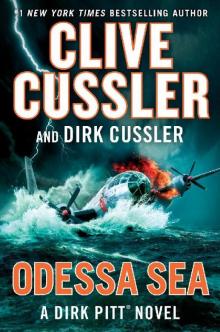 Odessa Sea
Odessa Sea Flood Tide
Flood Tide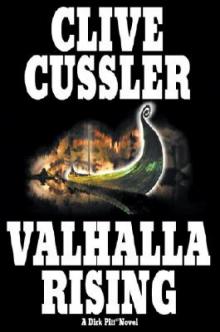 Valhalla Rising
Valhalla Rising Thriller 2
Thriller 2 The Tombs
The Tombs Lost Empire
Lost Empire The Gray Ghost
The Gray Ghost The Eye of Heaven
The Eye of Heaven Polar Shift
Polar Shift The Kingdom
The Kingdom Trojan Odyssey
Trojan Odyssey Shadow Tyrants
Shadow Tyrants Nighthawk
Nighthawk Blue Gold
Blue Gold Serpent
Serpent Lost City
Lost City The Gangster
The Gangster White Death
White Death Inca Gold
Inca Gold The Mayan Secrets
The Mayan Secrets The Pharaoh's Secret
The Pharaoh's Secret The Emperor's Revenge
The Emperor's Revenge Corsair
Corsair Sacred Stone
Sacred Stone The Silent Sea
The Silent Sea The Rising Sea
The Rising Sea Black Wind
Black Wind Fast Ice
Fast Ice Ghost Ship
Ghost Ship Marauder
Marauder The Thief
The Thief Medusa
Medusa Typhoon Fury
Typhoon Fury Journey of the Pharaohs
Journey of the Pharaohs The Navigator
The Navigator The Saboteurs
The Saboteurs Crescent Dawn
Crescent Dawn Skeleton Coast
Skeleton Coast Wrath of Poseidon
Wrath of Poseidon The Mediterranean Caper
The Mediterranean Caper The Romanov Ransom
The Romanov Ransom Treasure
Treasure The Race
The Race The Bootlegger
The Bootlegger Spartan Gold
Spartan Gold Havana Storm
Havana Storm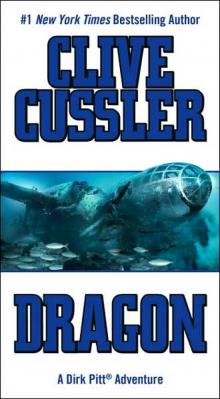 Dragon
Dragon Piranha
Piranha Poseidon's Arrow
Poseidon's Arrow The Cutthroat
The Cutthroat Atlantis Found
Atlantis Found The Jungle
The Jungle The Oracle
The Oracle Treasure / Dragon / Sahara: Clive Cussler Gift Set
Treasure / Dragon / Sahara: Clive Cussler Gift Set Clive Cussler and Dirk Pitt Revealed
Clive Cussler and Dirk Pitt Revealed The Sea Hunters
The Sea Hunters Pirate
Pirate The Striker
The Striker Plague Ship
Plague Ship The Wrecker
The Wrecker Iceberg
Iceberg The Chase
The Chase The Spy
The Spy Golden Buddha
Golden Buddha The Titanic Secret
The Titanic Secret Zero Hour
Zero Hour Fire Ice
Fire Ice Dark Watch
Dark Watch The Storm
The Storm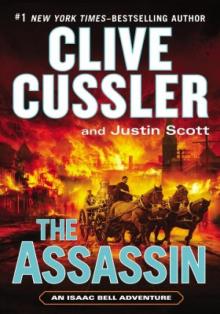 The Assassin
The Assassin Vixen 03
Vixen 03 Arctic Drift
Arctic Drift Night Probe!
Night Probe! Cyclops
Cyclops Medusa nf-8
Medusa nf-8 Shock Wave dp-13
Shock Wave dp-13 Marauder (The Oregon Files)
Marauder (The Oregon Files) Lost Empire fa-2
Lost Empire fa-2 Arctic Drift dp-20
Arctic Drift dp-20 Dirk Pitt 22 - Poseidon's Arrow
Dirk Pitt 22 - Poseidon's Arrow Treasure of Khan dp-19
Treasure of Khan dp-19 Dark Watch of-3
Dark Watch of-3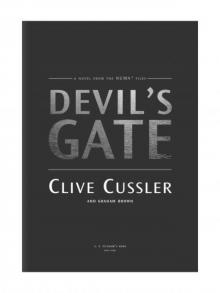 Devil's Gate
Devil's Gate The Sea Hunters II: More True Adventures with Famous Shipwrecks
The Sea Hunters II: More True Adventures with Famous Shipwrecks Flood Tide dp-14
Flood Tide dp-14 The Mediterranean Caper dp-2
The Mediterranean Caper dp-2 Iceberg dp-3
Iceberg dp-3 Sahara dpa-11
Sahara dpa-11 Pacific Vortex! dp-1
Pacific Vortex! dp-1 Deep Six dp-7
Deep Six dp-7 Dragon dp-10
Dragon dp-10 Serpent nf-1
Serpent nf-1 Havana Storm (Dirk Pitt Adventure)
Havana Storm (Dirk Pitt Adventure)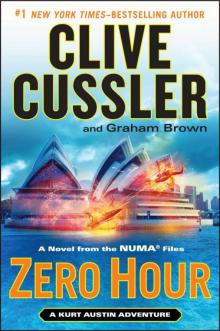 Zero Hour nf-11
Zero Hour nf-11 The Storm nf-10
The Storm nf-10 The Thief ib-5
The Thief ib-5 Lost City nf-5
Lost City nf-5 The Mayan Secrets fa-5
The Mayan Secrets fa-5 White Death nf-4
White Death nf-4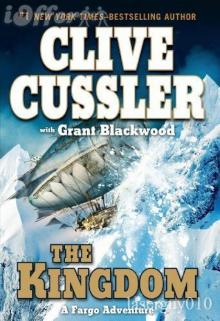 The Kingdom fa-3
The Kingdom fa-3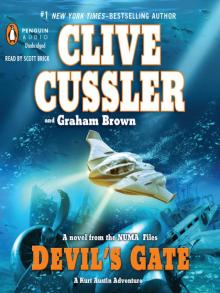 Devil's Gate nf-9
Devil's Gate nf-9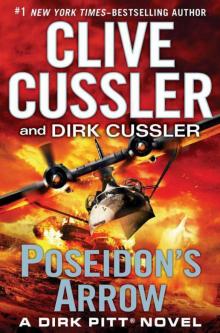 Poseidon's Arrow dp-22
Poseidon's Arrow dp-22 Raise the Titanic dp-4
Raise the Titanic dp-4 Shadow Tyrants--Clive Cussler
Shadow Tyrants--Clive Cussler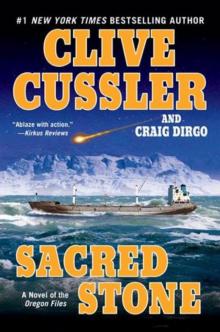 Sacred Stone of-2
Sacred Stone of-2 Skeleton Coast tof-4
Skeleton Coast tof-4 Mirage tof-9
Mirage tof-9 The Jungle of-8
The Jungle of-8 The Emperor's Revenge (The Oregon Files)
The Emperor's Revenge (The Oregon Files) Golden Buddha of-1
Golden Buddha of-1 Blue & Gold
Blue & Gold The Tombs fa-4
The Tombs fa-4 Inca Gold dp-12
Inca Gold dp-12 Treasure dp-9
Treasure dp-9 Atlantis Found dp-15
Atlantis Found dp-15 Black Wind dp-18
Black Wind dp-18 the Silent Sea (2010) tof-7
the Silent Sea (2010) tof-7 The Wrecker ib-2
The Wrecker ib-2 Fire Ice nf-3
Fire Ice nf-3 The Chase ib-1
The Chase ib-1 Sahara
Sahara The Striker ib-6
The Striker ib-6 Polar Shift nf-6
Polar Shift nf-6 The Race ib-4
The Race ib-4 Corsair of-6
Corsair of-6 Cyclops dp-8
Cyclops dp-8 The Navigator nf-7
The Navigator nf-7 Plague Ship tof-5
Plague Ship tof-5 Sea of Greed
Sea of Greed Vixen 03 dp-5
Vixen 03 dp-5 Thriller 2: Stories You Just Can't Put Down
Thriller 2: Stories You Just Can't Put Down